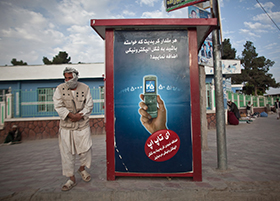Project Info
Project Description
The rapid proliferation of mobile phones and other digital devices can created an unparalleled opportunity to observe and understand the rapidly changing structure of communities in developing and conflict-affected states. In recent years, Call Detail Records (CDR) from commercial mobile phone networks have been used to study not just the frequency and timing of communication events, but also reflect the intricate structure of an individual’s social network, patterns of travel and location choice, as well as the socioeconomic and demographic structure of national and sub-regional populations.
However, current state-of-the-art computational methods used to analyse such data are notoriously ill-suited to answer basic, fundamental questions in the social science and policy arena. While many new, provably efficient algorithms for community detection have been recently developed, these methods have several key limitations: they rarely scale to real-world datasets consisting of millions of interconnected actors; they are not applicable to dynamic contexts where network structure evolves over time; and they are almost never validated.
People
Joshua Blumenstock, Sham Kakade, Jacob Shapiro
Publications
- Recovering Structured Probability Matrices.
Qingqing Huang, Sham Kakade, Wenhao Kong, Gregory Valiant.
In ITCS, 2018.
ArXiv Report, arXiv:1602.06586. - Prediction with a Short Memory.
Sham Kakade, Percy Liang, Vatsal Sharan, Gregory Valiant.
In STOC, 2018.
ArXiv Report, arXiv:1612.02526. - Determinants of Mobile Money Adoption in Pakistan.
Raza Khan and Joshua Blumenstock
In NIPS, 2017, Workshop on Machine Learning for the Developing World
ArXiv Report, arXiv:1712.01081. - Predictors without Borders: Behavioral Modeling of Product Adoption in Three Developing Countries.
Raza Khan and Joshua Blumenstock
In KDD, 2017.
ACM Digital Library, #2939710 .
Focus Areas
Social networks in developing countries
Region
Afghanistan, Rwanda
Sponsors
NSF
Office of Naval Research
World Bank








